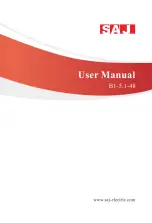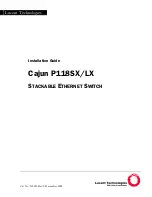
Storage Management Overview
57
NAS 4000s and 9000s Administration Guide
RAID 1+0—Drive Mirroring and Striping
In this configuration, information on one drive is duplicated onto a second drive, creating
identical copies of the information as shown in
Figure 28
. Therefore, this method provides the
best fault tolerance. RAID 1+0 requires an even number of drives and is the only method for
fault tolerance protection if only two drives are installed or selected for an array. If more than
two drives are in an array, the data is striped across all of the drives in the array.
Figure 28: RAID 1+0 (drive mirroring) of P1 onto P2
This method is useful when high performance and data protection are more important than the
cost of hard drives. The operating system drives are mirrored. If one drive fails, the mirror
drive immediately takes over and normal system operations are not interrupted.
Note:
HP supports a configuration that uses RAID 1+0 on the system drives in a two drive RAID
array.
Caution:
If two drives being mirrored to each other both fail, data loss occurs.
Advantages
Drive mirroring offers:
■
The highest read and write performance of any fault-tolerant configuration.
■
Protection against data loss if one drive fails.
■
Data preservation in a RAID 1+0 system, when more than one drive fails, as long as none
of the failed drives are mirrored to another failed drive.
Disadvantages
Some disadvantages of drive mirroring are:
■
Increased expense—Since many drives must be used for fault tolerance and hard drives
must be added in pairs.
■
Decreased storage capacity—Only 50% of the total drive capacity is usable.
P1
P2
B1
B2
B3
B4
B1
B2
B3
B4
Summary of Contents for NAS 4000s
Page 18: ...About this Guide 18 NAS 4000s and 9000s Administration Guide ...
Page 92: ...Disk Management 92 NAS 4000s and 9000s Administration Guide ...
Page 196: ...NetWare File System Management 196 NAS 4000s and 9000s Administration Guide ...
Page 246: ...Index 246 NAS 4000s and 9000s Administration Guide ...
















































